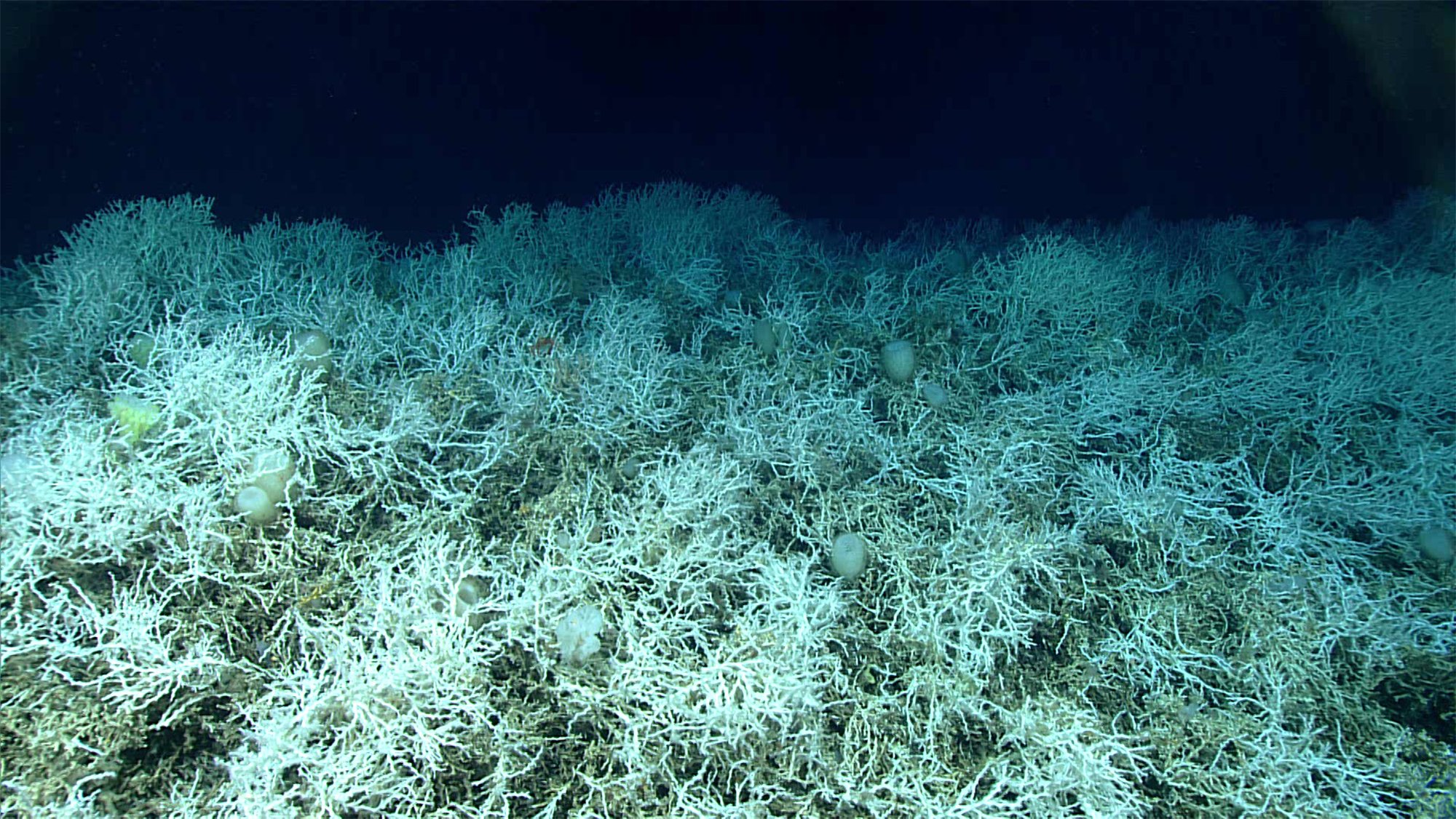

Scientists have found the world’s largest deep-sea coral reef off the eastern coast of the United States. The massive 6.4 acre area stretches from Miami, Florida up to Charleston, South Carolina. According to the National Oceanic and Atmospheric Administration (NOAA) this is an area larger than the state of Vermont. The findings were described in a study published January 12 in the journal Geomatics.
[Related: To save coral reefs, color the larvae.]
The Blake Plateau is in the western Atlantic Ocean off the coasts of Florida, Georgia, South Carolina, and North Carolina. Earlier studies of the area found that the region may be a dead zone–an area of the ocean that has less oxygen dissolved in water, which generally kills most of the sea life. During a multi-year mapping project of this perceived dead zone, scientists instead found a very alive ecosystem full of reef-building coral.
“For years we thought much of the Blake Plateau was sparsely inhabited, soft sediment,” study co-author and NOAA Ocean Exploration Operations Chief Kasey Cantwell said in a statement. “Past studies have highlighted some coral in the region, particularly closer to the coast and in shallower waters, but until we had a complete map of the region, we didn’t know how extensive this habitat was, nor how many of these coral mounds were connected.”

There were hints that a massive reef was in the Blake Plateau first found in 2019, but scientists waited until a mapping project from NOAA, the University of New Hampshire, the Bureau of Ocean Energy Management, Temple University, and the US Geological Survey could confirm it to officially announce it. They combined data from over 30 multi-beam sonar mapping surveys and 23 submersible dives to create a nearly complete map. They identified 83,908 individual coral mound peak features and a core area has high-density mounds that are up to 158 miles long and 26 miles wide. A nearly continuous coral mound spans 310 miles long and almost 68 miles wide, according to the study.
[Related: Scientists are intentionally bleaching and ‘cryopreserving’ coral.]
The borders of the reef are between 35 and 75 miles off the coastline. A spot called Million Mounds makes up the largest part of the reef. It is built up of a stony coral that is usually found 656 to 3,280 feet below the surface where the temperature averages a chilly 39 degrees Fahrenheit. According to NOAA, these cold water corals grow in deeper parts of the ocean where there is no sunlight and filter feed on plankton and other organic material for sustinence. They are known to be “important ecosystem engineers” that create shelter, food, and a nursery for fish and other invertebrates, but they are still poorly understood. About 75 percent of the global ocean is still unmapped in detail, including roughly 50 percent of the marine waters of the United States.
“This study provides a methodology aimed at interpreting mapping data over large ocean regions for insights into seafloor habitats and advancing standardized approaches to classifying them to support ecosystem-based management and conservation efforts,” Derek Sowers, study co-author and Mapping Operations Manager for NOAA’s Ocean Exploration Trust, said in a statement.
The team hopes that the data collected about the Blake Plateau and its resources will help inform sustainable use and management of this and other reefs.
